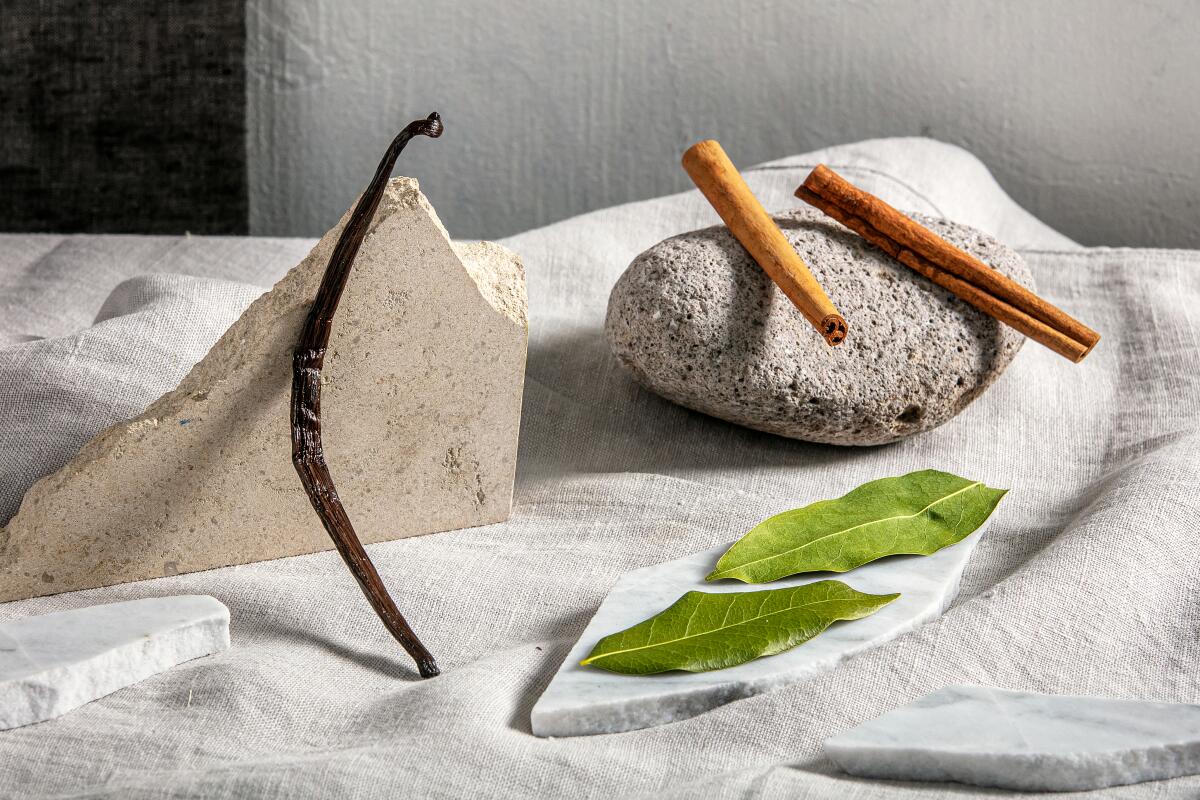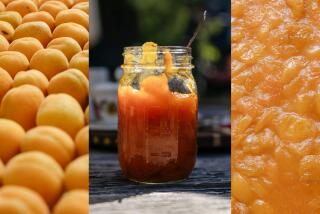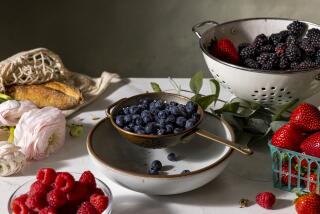Preparations for making jam

This story is a component of the feature “Seasons of Preserves: Stone Fruit,” which is part of a four-part series on preserving fruit at home called “L.A. in a Jar.”
You’ve got your equipment ready to go and you’ve brought your fruit home from the market. Now what?
First things first: Wash the fruit. No need for soap or scrubbing that might damage it. Run the fruit under some warm tap water and use your fingers to gently loosen any dirt on the outside. Then remove the stems and cut the plums, peaches, apricots or nectarines in half from top to bottom, like you would an avocado. If the variety is “free stone,” meaning the pit releases from the flesh easily, the halves should separate cleanly. You can then just pry the pit out with your thumb. If it’s a “cling-stone” variety, meaning the pit adheres doggedly to the flesh, you’ll have to use a spoon or melon baller to cut it out. (Or simply cut around the pit to remove all the fruit, like you would with a mango.)
Once the fruit is freed, chop it however you like, but no larger than 1/2-inch-ish pieces. This size will mostly break down while cooking but also leave you with some large chunks when finished. Don’t worry about having exact-size pieces; just make sure they’re all roughly the same size and you’ll be fine. (By the way, I never peel the fruit, because I love the color, texture and flavor the skins add, particularly in stone fruit, but if you don’t want them, peel the fruit before chopping.)
Then it’s time to get the rest of your ingredients in order:
Sugar: Use regular white granulated or the beige, organic type, but steer clear of brown sugars, coconut sugars or any syrup sweeteners. You can’t not use those, but they’re for more advanced learning down the road, once you have a grip on the basic method based on granulated sugar.
Lemon juice: Use fresh-squeezed, please, and strain it through a fine sieve to remove any seeds and pulp.
Salt: Use kosher or sea salt. It may seem odd to add salt to jam, but just like in desserts, a pinch helps enhance the flavors and sweetness of the finished product. With the amount of sugar you’ll be using, one pinch of salt won’t make the jam taste salty, I promise.
Flavorings: After fruit, sugar and lemon juice, all other components are optional. I’d urge you to not use extra flavorings for the first dozen times you make jam so that you can experience the fruit’s flavor unadulterated, especially if it’s a particularly precious variety with a signature flavor, like damson or greengage plums. However, once you become attuned to the flavors of the fruit in the finished jam, you may want to add background flavorings that enhance the fruit rather than cover it up.
In general, the three flavors that pair best with stone fruit are vanilla, cinnamon and bay. Stir in half a vanilla bean, a cinnamon stick or a couple bay leaves while the fruit is macerating and cooking and then retrieve them when you pour the jam into jars. If you want to use extracts, you’ll want to stir them in once the jam is finished since they’ll evaporate while cooking.
More to Read
Eat your way across L.A.
Get our weekly Tasting Notes newsletter for reviews, news and more.
You may occasionally receive promotional content from the Los Angeles Times.











